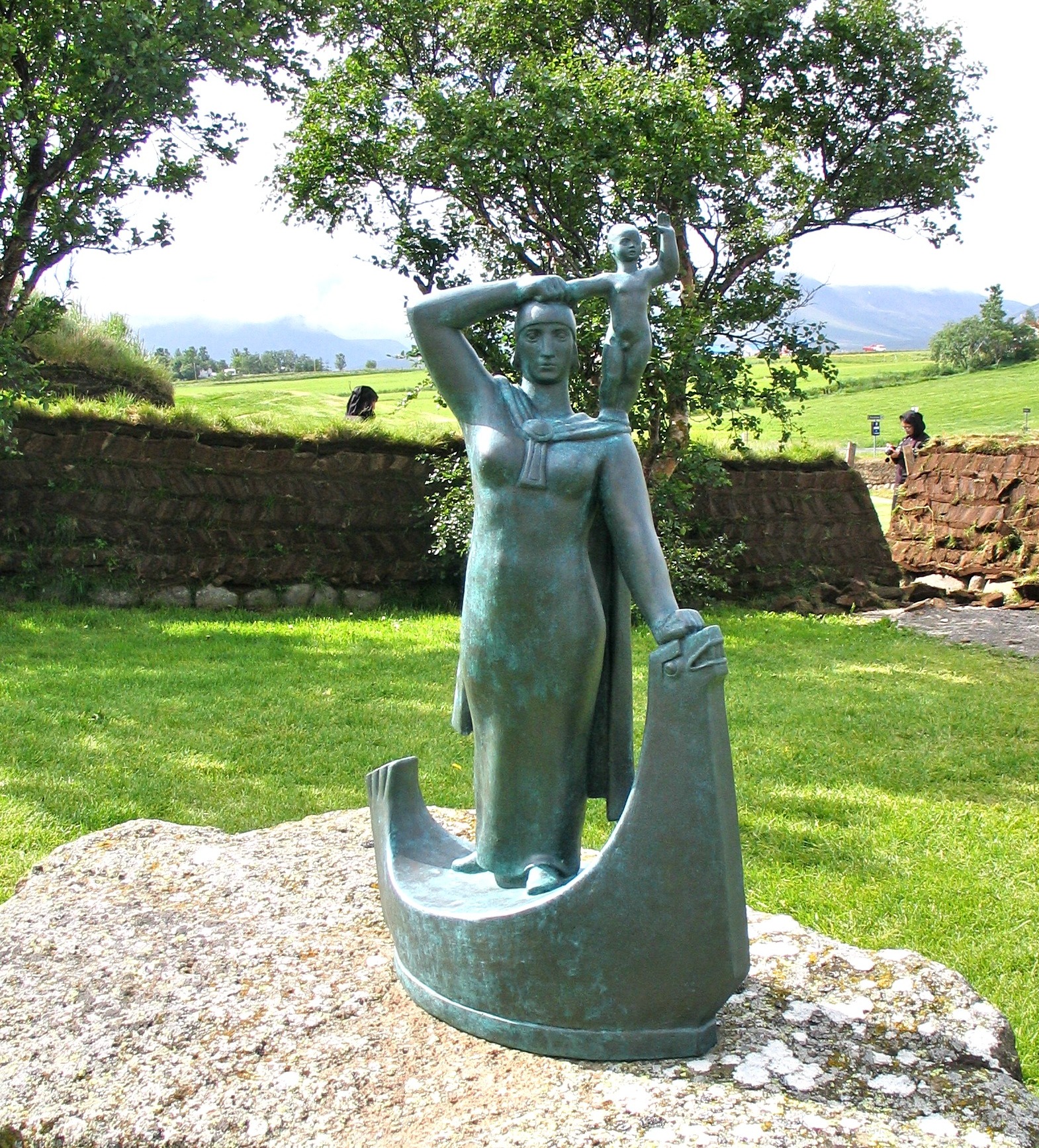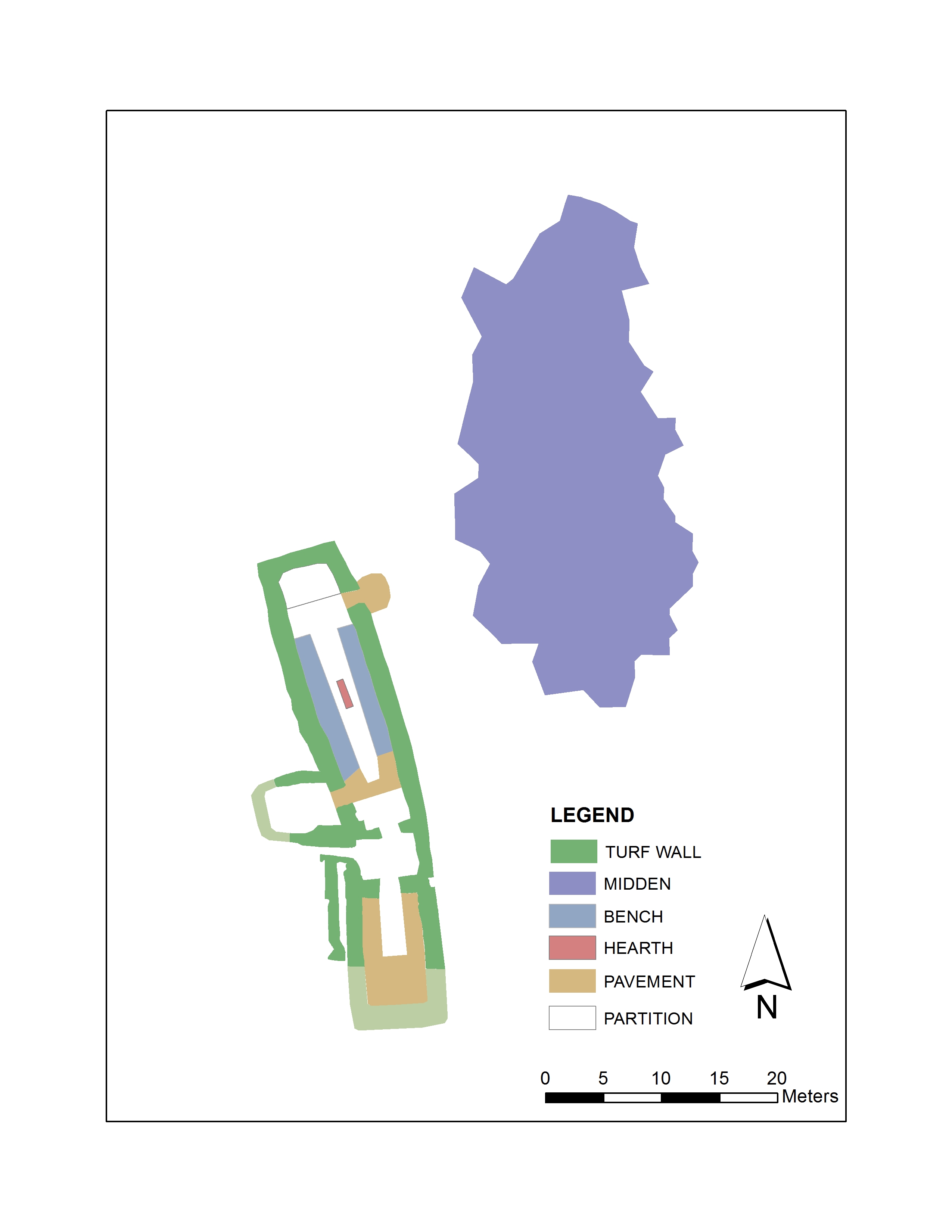 Snorri Þorfinnsson, son of Guðríður Þorbjarnardóttir and Þorfinnur Karlsefni, was a farmer at Glaumbær in 11th century. In the Sagas Guðríður Þorbjarnardóttir was without doubt one of the most widely-traveled women of her time. She crossed Europe twice on foot, and made eight ocean journeys. She was a participant in Nordic exploration of new lands, lived through the change from heathenism to Christianity, and handled her role well.
Snorri Þorfinnsson, son of Guðríður Þorbjarnardóttir and Þorfinnur Karlsefni, was a farmer at Glaumbær in 11th century. In the Sagas Guðríður Þorbjarnardóttir was without doubt one of the most widely-traveled women of her time. She crossed Europe twice on foot, and made eight ocean journeys. She was a participant in Nordic exploration of new lands, lived through the change from heathenism to Christianity, and handled her role well.
The symbolic depiction of Guðríður on the right is a photograph of a sculpture by Ásmundur Sveinsson, dating from 1938, which can be seen in front of the Glaumbær church.
According to the Sagas, the first known inhabitants of Glaumbær lived here in the 11th century. They are mentioned in the Saga of the Greenlanders, which tells of the explorers Leifur Eiríksson and Þorsteinn Eiríksson, sons of Eiríkur the Red, and Guðríður Þorbjarnardóttir wife of Þorsteinn, as well as her second husband Þorfinnur Karlsefni and their son, Snorri Þorfinnsson. Guðríður Þorbjarnardóttir is mentioned both in the Saga of the Greenlanders and in the Saga of Eiríkur the Red. Guðríður, a granddaughter of an Irish freedman, was born in the 10th century in Snæfellsnes in western Iceland. She emigrated to the Icelandic settlement in Greenland founded by Eiríkur the Red, and married his son Þorsteinn, who soon died. The young widow then married Þorfinnur Karlsefni, a merchant and a farmer from Staður in Reynines (now Reynistaður) in Skagafjörður.
Guðríður and Þorfinnur explored Vínland (now called Newfoundland), which had been discovered by Leifur Eiríksson, former brother-in-law of Guðríður. They stayed there at least one winter, and planned to settle permanently. Their son, Snorri, was born in the New World. Due to conflict with the aboriginal inhabitants, they did not remain there long and returned to Iceland. Initially they lived at Þorfinnur old home at Reynines. They may have then purchased the estate of Glaumbær, in 1010 or so, and settled there. This is not certain. But after Þorfinnur passed away, Snorri farmed at Glaumbær. Guðríður decided to make a pilgrimage to the Pope in Rome. Snorri had a church built in his mothers absence, the first known to have stood at Glaumbær (Iceland adopted the Christian religion in AD 1000). According to the Saga of the Greenlanders, on her return Guðríður became an anchoress, living in solitary worship.
The first farmhouses 
Previously it was believed that the turf house, Glaumbaer, was located on the original farm mound where all previous domestic structures had been. However a test trench into the midden outside the back door of the turf manor house shows it was not used before 1104. This implies that the farm was built or moved from somewhere else sometime after 1100 AD.
Remote sensing in a leveled field about 150m east of the old farmhouse indicated that extensive building remains could be found under the surface. Further archaeological excavation in the field unearthed a 30m long longhouse (skáli), and associated midden, dated to the 11th century. This discovery proves that substantial subsurface remains may be found even where nothing is visible on the surface.
The skáli and the old turf famhouse represent two very different forms of dwellings, allowing us to see, in one place, both the first and the final stages of 1000 years of Icelandic turf house development.
